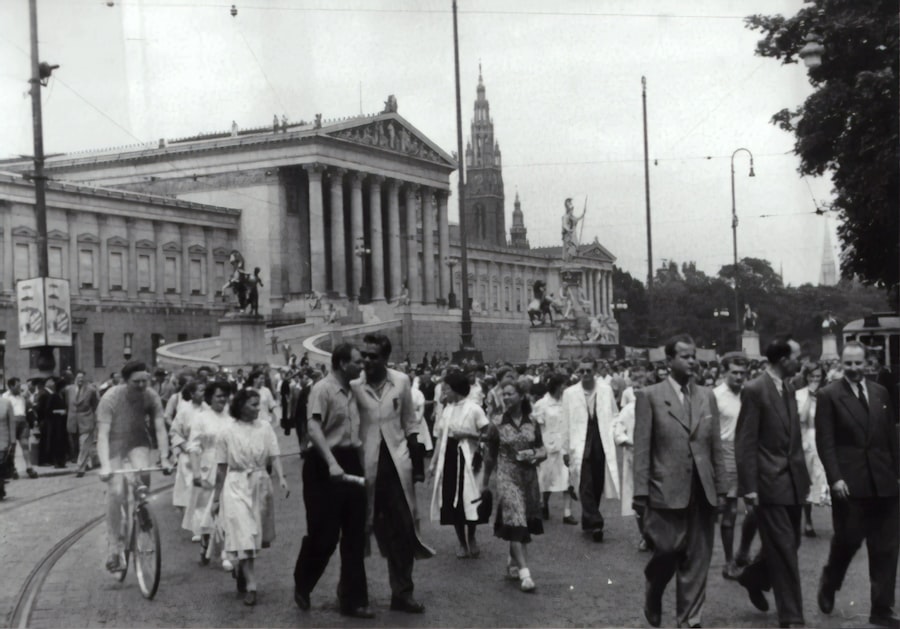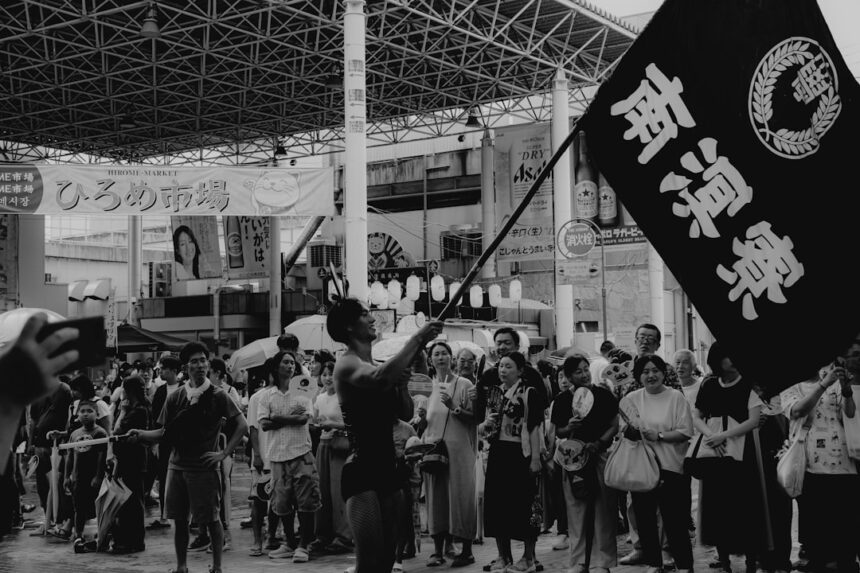The Congress for Cultural Freedom (CCF) emerged in the early 1950s as a response to the growing tensions of the Cold War and the perceived threat of totalitarianism. Founded in 1950, the organization was a product of a unique confluence of political, cultural, and intellectual currents that sought to promote democratic values and artistic freedom in a world increasingly polarized by ideological conflict. The CCF was established during a time when many intellectuals and artists were grappling with the implications of fascism and communism, both of which posed significant challenges to individual liberties and creative expression.
The founders believed that culture could serve as a powerful tool against authoritarianism, and they sought to create a platform for free thought and artistic innovation. The initial gathering that led to the formation of the CCF took place in Berlin, where a diverse group of writers, artists, and intellectuals convened to discuss the role of culture in a democratic society.
The founders recognized that the battle for freedom was not only political but also cultural, and they aimed to foster an environment where creativity could flourish without fear of censorship or repression. The CCF quickly gained traction, attracting prominent figures from various fields who were eager to engage in this vital discourse.
Key Takeaways
- The Congress for Cultural Freedom was founded in 1950 as a response to the perceived threat of communist influence in the cultural and intellectual spheres.
- The mission of the Congress for Cultural Freedom was to promote freedom of expression, artistic creativity, and intellectual exchange, with the goal of countering the spread of communist ideology.
- The Congress for Cultural Freedom had a significant impact on artistic expression by supporting and promoting avant-garde and experimental art forms that were seen as a symbol of freedom and individualism.
- The Congress for Cultural Freedom influenced intellectual thought by providing a platform for diverse and critical perspectives, challenging the dogma of both communism and capitalism.
- The Congress for Cultural Freedom played a key role in the cultural and ideological battleground of the Cold War, using cultural and intellectual activities to advance the values of the West and undermine the appeal of communism.
The Mission and Goals of the Congress for Cultural Freedom
The mission of the Congress for Cultural Freedom was rooted in the belief that culture plays a crucial role in shaping democratic societies. The organization sought to promote artistic expression, intellectual inquiry, and cultural exchange as essential components of a free society. One of its primary goals was to create a transnational network of artists and intellectuals who could collaborate and share ideas across borders, thereby fostering a sense of solidarity among those committed to defending freedom against authoritarian regimes.
The CCF aimed to elevate the importance of culture in public discourse, arguing that art and literature could serve as powerful vehicles for social change. In addition to promoting artistic freedom, the CCF also sought to challenge the prevailing narratives of the time that depicted communism as an inevitable force. By showcasing diverse cultural expressions from around the world, the organization aimed to demonstrate that there were alternative paths to social progress that did not involve totalitarianism.
The CCF organized conferences, published journals, and supported various artistic initiatives to advance its mission. Through these efforts, it sought to inspire individuals to think critically about their societies and to engage actively in the defense of democratic values.
The Impact of the Congress for Cultural Freedom on Artistic Expression

The Congress for Cultural Freedom had a profound impact on artistic expression during its existence. By providing a platform for artists and writers from diverse backgrounds, the CCF facilitated the exchange of ideas and fostered collaboration among creative individuals who might not have otherwise connected. This cross-pollination of artistic influences led to the emergence of new forms of expression that challenged conventional norms and pushed the boundaries of creativity.
The CCF’s commitment to artistic freedom encouraged artists to explore themes related to identity, politics, and social justice, resulting in works that resonated deeply with audiences around the world. Moreover, the CCF’s emphasis on cultural diplomacy helped elevate the status of artists as important contributors to societal discourse. By recognizing the power of art as a means of communication, the organization encouraged artists to engage with pressing social issues and to use their work as a form of activism.
This shift in perspective not only enriched the artistic landscape but also inspired a generation of creators to view their work as a vehicle for change. The CCF’s influence can be seen in various artistic movements that emerged during this period, as artists sought to address the complexities of their times through innovative and thought-provoking works.
The Influence of the Congress for Cultural Freedom on Intellectual Thought
| Metrics | Data |
|---|---|
| Number of funded projects | Over 800 projects funded |
| Number of countries involved | 35 countries involved |
| Duration of operation | 1949-1967 |
| Impact on intellectual thought | Significant influence on Cold War intellectual discourse |
The Congress for Cultural Freedom played a significant role in shaping intellectual thought during the mid-20th century. By bringing together scholars, writers, and thinkers from diverse backgrounds, the CCF created an environment conducive to rigorous debate and exploration of ideas. This intellectual exchange fostered a climate where critical thinking was valued, and participants were encouraged to challenge prevailing ideologies.
The CCF’s commitment to free inquiry allowed for the exploration of complex philosophical questions related to democracy, freedom, and human rights. One notable aspect of the CCF’s influence on intellectual thought was its focus on anti-totalitarianism. The organization provided a platform for scholars who critiqued both Western capitalism and Eastern communism, advocating for a nuanced understanding of political systems.
This approach encouraged intellectuals to engage with ideas from various perspectives rather than adhering strictly to ideological dogmas. As a result, the CCF contributed to a more dynamic intellectual landscape where diverse viewpoints could coexist and be debated openly.
The Congress for Cultural Freedom and the Cold War
The Congress for Cultural Freedom emerged as a significant player in the cultural dimensions of the Cold War. As tensions between the United States and the Soviet Union escalated, both sides recognized the importance of culture as a battleground for ideological supremacy. The CCF positioned itself as a counterweight to Soviet cultural propaganda by promoting democratic values through art and intellectual discourse.
By showcasing works that celebrated individual freedom and creativity, the organization sought to demonstrate that Western culture was vibrant and worthy of admiration. The CCF’s activities were not limited to Europe; it extended its reach globally, organizing events and conferences in various countries affected by Cold War dynamics. These initiatives aimed to build alliances with local artists and intellectuals who shared similar values while also countering Soviet influence in those regions.
The organization’s efforts contributed to a broader understanding of cultural diplomacy as an essential component of foreign policy during this tumultuous period.
Controversies and Criticisms Surrounding the Congress for Cultural Freedom

Despite its noble intentions, the Congress for Cultural Freedom faced several controversies and criticisms throughout its existence. One significant point of contention was its alleged ties to intelligence agencies, particularly the CICritics argued that while the CCF promoted artistic freedom, it was also used as a tool for American propaganda during the Cold War. This perception raised questions about the authenticity of its mission and whether it genuinely championed free expression or served broader geopolitical interests.
Additionally, some artists and intellectuals criticized the CCF for its selective approach to cultural representation. They argued that while it claimed to promote diversity, it often prioritized certain voices over others, particularly those aligned with Western ideologies. This led to accusations of elitism and exclusion within the organization, prompting debates about who had the authority to define what constituted “freedom” in artistic expression.
These controversies highlighted the complexities inherent in navigating cultural politics during a time marked by ideological polarization.
Key Figures and Contributors to the Congress for Cultural Freedom
The Congress for Cultural Freedom attracted numerous influential figures from various fields who contributed significantly to its mission. Among them was Arthur Koestler, a prominent writer known for his critiques of totalitarianism. Koestler’s experiences as a former communist shaped his perspective on freedom and creativity, making him an essential voice within the organization.
His writings often explored themes related to individual autonomy and moral responsibility, resonating with the CCF’s goals. Another key figure was Mary McCarthy, an American novelist and critic who played an active role in promoting cultural exchange through her involvement with the CCF. McCarthy’s commitment to free expression and her willingness to engage with complex political issues made her an influential advocate for artistic freedom.
Her contributions helped shape discussions around literature’s role in society and its potential as a catalyst for change.
The Legacy of the Congress for Cultural Freedom in Contemporary Society
The legacy of the Congress for Cultural Freedom continues to resonate in contemporary society, particularly in discussions surrounding artistic expression and intellectual freedom. The organization’s emphasis on cultural diplomacy laid the groundwork for future initiatives aimed at fostering cross-cultural dialogue and collaboration among artists and thinkers worldwide. In an era marked by increasing polarization and censorship, the CCF’s commitment to defending free expression remains relevant as individuals grapple with similar challenges today.
Moreover, the CCF’s impact can be seen in various contemporary movements advocating for social justice through art. Artists continue to draw inspiration from the organization’s ideals, using their work as a means of addressing pressing societal issues such as inequality, discrimination, and human rights abuses. The spirit of collaboration fostered by the CCF lives on as artists from diverse backgrounds come together to create meaningful dialogue around shared values.
The Congress for Cultural Freedom and its Global Reach
The Congress for Cultural Freedom’s influence extended far beyond Europe; it had a significant global reach that shaped cultural landscapes in various regions around the world. By organizing conferences and events in countries such as India, Japan, and Latin America, the CCF sought to engage with local artists and intellectuals while promoting democratic values through cultural exchange. This global outreach allowed for diverse voices to be heard within its framework while also challenging dominant narratives imposed by authoritarian regimes.
In many instances, local artists found inspiration in the CCF’s mission, using their platforms to advocate for freedom within their own contexts. This cross-cultural engagement enriched both local artistic practices and global conversations about democracy and human rights. The CCF’s ability to connect individuals across borders demonstrated that culture could serve as a unifying force even amidst geopolitical tensions.
The Congress for Cultural Freedom and its Relationship with the CIA
One of the most contentious aspects surrounding the Congress for Cultural Freedom was its relationship with the CIWhile many within the organization were genuinely committed to promoting artistic freedom, evidence has emerged suggesting that some activities were funded or influenced by American intelligence agencies seeking to counter Soviet propaganda during the Cold War. This connection raised ethical questions about whether art could truly be free if it was supported by interests tied to geopolitical agendas. Critics argue that this relationship compromised the integrity of the CCF’s mission by blurring lines between genuine cultural promotion and political manipulation.
This ongoing debate highlights complexities inherent in navigating cultural politics during times marked by ideological conflict.
The End of the Congress for Cultural Freedom and its Aftermath
The Congress for Cultural Freedom began to decline in influence during the late 1960s as global political dynamics shifted dramatically. The rise of new social movements challenged established norms around art and culture while also questioning traditional notions of authority within intellectual circles. As younger generations sought alternative avenues for expression outside institutional frameworks like those represented by organizations such as CCF, its relevance diminished.
In its aftermath, however, many principles championed by CCF continued influencing subsequent generations engaged in cultural activism worldwide. The organization’s legacy lives on through ongoing efforts advocating for artistic freedom amid increasing censorship threats globally today—reminding us all that while institutions may fade away over time; ideas rooted in defending human rights endure across generations seeking justice through creativity.
The Congress for Cultural Freedom (CCF) was an influential organization during the Cold War, aimed at countering Soviet influence by promoting Western cultural values. It played a significant role in the intellectual and cultural landscape of the time, often engaging with artists, writers, and intellectuals to foster a pro-democratic sentiment. For a deeper understanding of the CCF’s impact and its historical context, you can explore a related article on the topic by visiting In The War Room. This resource provides insights into the intricate dynamics of cultural diplomacy and the strategic efforts employed during this pivotal era.
CHECK THIS OUT! 📽️🎞️ Hollywood’s Secret War: How the CIA Rewrote Movies
FAQs
What was the Congress for Cultural Freedom?
The Congress for Cultural Freedom was an anti-communist advocacy group founded in 1950. It aimed to promote intellectual freedom and cultural exchange during the Cold War.
What were the goals of the Congress for Cultural Freedom?
The Congress for Cultural Freedom sought to counter the influence of communism in the cultural and intellectual spheres. It aimed to support artistic and intellectual freedom, and promote Western values and democracy.
How did the Congress for Cultural Freedom operate?
The Congress for Cultural Freedom operated through a network of magazines, conferences, and artistic events. It received funding from the CIA, which was not publicly disclosed at the time.
What impact did the Congress for Cultural Freedom have?
The Congress for Cultural Freedom played a significant role in shaping the cultural and intellectual landscape during the Cold War. It supported numerous artists, writers, and intellectuals, and its activities had a lasting impact on the global cultural scene.
Was the Congress for Cultural Freedom controversial?
Yes, the Congress for Cultural Freedom was controversial due to its covert funding from the CIA. This led to criticism and accusations of propaganda and manipulation of cultural and intellectual discourse.




